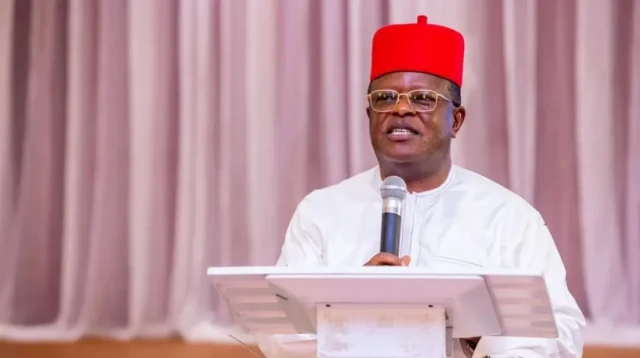The Minister of Works, David Umahi, has formally reopened the Independence Bridge after several days of urgent repair efforts.
During the reopening event on Friday, the minister revealed that the bridge's closure was necessitated by a structural failure of its approach slab, which collapsed due to a flawed design.
Umahi explained that the original construction of the approach slab was designed as a cantilever, which was not structurally sound.
“It should not have been a cantilever. What we had instead was a free-standing approach slab, which is incorrect. Every approach slab requires at least one end to be fixed,” he clarified.
He further noted that the slab failed when the sand fill underneath it eroded, undermining its stability and creating a significant risk for travelers.
Referring to the situation as an emergency, the minister acknowledged that standard procedures were not followed in communicating the closure.
“The error made by the controller, Olukorede Kesha, was that she did not inform us. We also failed to properly notify Lagosians of alternative routes,” Umahi remarked. In light of this, he announced intentions to implement a standardized national procedure for road and bridge closures.
“Moving forward, no road or bridge in Nigeria will be closed without a clearly articulated process. Controllers must submit drone surveys, outline the technical issue and its solution, suggest alternative routes, and disseminate this information to the public,” he stated.
The minister also revealed plans for a redesign of the bridge to ensure long-term stability. “We have decided to redesign the structure as a one-span bridge, which will remove lateral head pressure on the abutment and factor in unknown elements like piling depth,” he said.
Umahi explained that Lagos bridges, such as the Third Mainland, Carter, and Iddo bridges, rely on skin-friction piling, meaning their stability depends on the surrounding sand.
“Any scouring or sand excavation jeopardizes the piles,” he indicated, adding that ongoing studies will inform additional reinforcement efforts. The minister announced that more permanent work would begin in three weeks, once the integrity of the underground pipes is confirmed.
He also outlined a phased construction strategy to minimize disruption, breaking the road works into two phases, each approximately 21 days long.
Umahi stressed that future construction timelines would be arranged for the public's convenience, with certain projects conducted solely on weekends or during nighttime.
He mentioned that the Lagos State Traffic Management Authority (LASTMA) would assist in traffic oversight during the repairs.
“This is not merely an engineering issue; it encompasses communication, safety, and accountability. We owe it to Nigerians to improve,” the minister concluded.




















